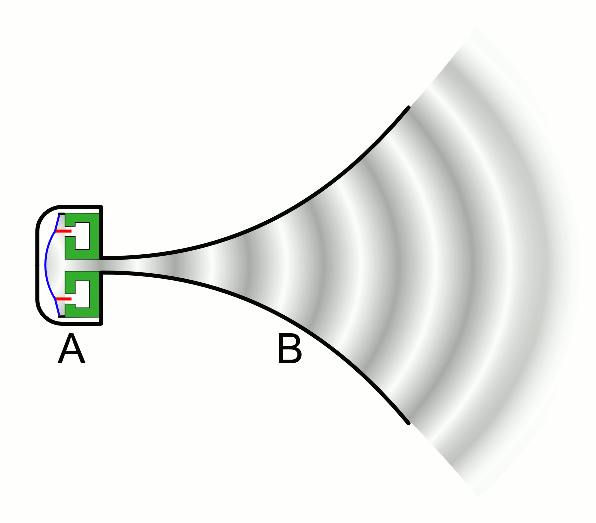5 Types of Land Pollution and Characteristics Explained
Types of land pollution are; invasive, non-invasive, industrial, commercial and domestic land pollutions respectively. They are categorized based on range of influence, and source/context of degradation.
This article discusses the types of land pollution and their individual attributes, as follows;
1). Invasive Land Pollution (as one of the Types of Land Pollution)
Invasive land pollution is a type of land pollution that affects both the Earth's surface and a significant shallow-depth beneath the surface.
It is called 'invasive' to indicate that the degradation permeates the surficial zone that serves as a limit in conventional, non-invasive land pollution.
The main cause of invasive land pollution is the presence of motile pollutants which can migrate spontaneously under the influence of gravity, or may be easily transported by water from precipitation.
Because of their mobility, such pollutants migrate across a significant distance, so that after they have been deposited on a given land area, their environmental impacts may spread into the subsurface soil, and into groundwater reserves.
There are relatively-numerous cases of land pollution that are invasive; and this can be attributed to the nature of pollutants involves, and the hydrological/climatic conditions of the polluted site.
When environmental degradation is invasive, it affects more than one medium, and alters the trend of both biotic and abiotic conditions in affected ecosystems. This can be observed as a combination of soil, water and air pollution occurring simultaneously in the same location; or in the form of aquatic ecosystem-degradation due to pollution of adjacent land.
Such environmental issues are relatively complex and often require expensive measures for remediation.
It must be acknowledged that there are other perspectives on the meaning of invasive pollution.
One of these is concerned with biological marine pollution, caused by invasive, non-native species in oceans [5].
Another perspective discusses invasive-pollution based on the observation of increase in the population of invasive species in polluted lands [2]; such as the presence of birds and ruminants in unmanaged landfill sites. These perspectives all differ from invasive land pollution, which specifically describes the migration of land-based pollutants from the Earth's surface to adjacent areas.
Heavy metals and hydrocarbons (from oil spills and chemical discharges) are examples of pollutants that are migratory [4] and which can be involved in invasive pollution.
2). Non-Invasive Land Pollution
Non-invasive land pollution is a type of pollution whose effect or environmental impact, is restricted to the Earth' surface. It is also referred to as surface soil pollution.
Surface soil pollution mostly affects topsoil, which is exposed to human influence, waste materials and hazardous pollutants. It is non-invasive because its effects are negligible beneath the surface.
The cause of non-invasive land pollution can be attributed to factors like pollutant type, soil and subsurface characteristics, topography, and climate.
Pollutants that can remain confined to the surface have low-mobility. They are often inorganic, solid waste materials that have minimal chemical effect, and tend to cause only aesthetic pollution of land.
An example of this is plastic pollution in urban areas, which could occur due to the overflow of landfills, or as a result of indiscriminate littering with waste [3].
Other types of pollutants can be involved in non-invasive land pollution, provided environmental conditions restrict their mobility. Examples of such restrictive conditions are impervious ground, sloping topography, and low humidity/precipitation.
Compared to invasive land pollution, non-invasive pollution is rare, due to the multitude of factors that can cause pollutants to spread from the Earth's surface to adjacent zones.
The remediation of this type of land pollution is also relatively simple and inexpensive. Recycling is a good preventive measure for non-invasive pollution.

3). Industrial Land Pollution (as one of the Types of Land Pollution)
Industrial pollution of land is the term used to describe any process or act whereby toxins from industrial facilities come in contact with the external environment, in such a manner that reduces the quality of surface soil and water.
Industrialization can cause land pollution by facilitating activities like mining and material conversion, that alter the physicochemical equilibrium of the Earth's surface. Since industrialization is itself a prominent occurrence in many parts of the world, land pollution by industries is also a prominent environmental problem.
Types of industrial pollution are; thermal, radioactive, and chemical types, which are distinguished from each other by the nature of pollutants involved.
Industries that cause the most pollution include mining, energy resource-development (such as petroleum production, power plant-operation), agriculture (including pesticide/herbicide/fertilizer production, food processing) and manufacturing industries.
Industrial pollution is a broad topic that is related to other types of land pollution including domestic and commercial (since most of the pollutants come from industries). It can also be very hazardous, because of the large quantities of toxic effluents generated by industrial facilities globally.

4). Commercial Land Pollution
As the name implies, commercial land pollution is the degradation of the Earth's surface by materials from commercial facilities and activities.
Commercial sources of pollution include warehouses, supermarkets, eateries and retail stores. Activities in these locations can produce solid waste or garbage, which is often dumped on exposed soil.
Both commercial and industrial waste often comprise of a high proportion of solid materials [1], whose effects on the environment range from aesthetic to chemical pollution.
Commercial land pollution can be mitigated by providing reliable waste management infrastructure to commercial facilities, and enforcing environmental regulations.
5). Domestic Land Pollution (as one of the Types of Land Pollution)
Domestic land pollution is caused mainly by municipal waste, which could be solid (that is; municipal solid waste, MSW), liquid or gaseous.
Sources of domestic waste that cause land pollution are mostly residential buildings, although farms, gardens and commercial outlets may also be classified as domestic sources of pollution.

Conclusion
Types of land pollution are;
1. Invasive Land Pollution
2. Non-Invasive Land Pollution
3. Industrial Land Pollution
4. Commercial Land Pollution
5. Domestic Land Pollution
References
1). Bradford, A. (2023). "Pollution facts and types of pollution." Available at: https://www.livescience.com/22728-pollution-facts.html. (Accessed 6 May 2023).
2). Crooks, J.; Chang, A. L.; Ruiz, G. (2011). "Aquatic pollution increases the relative success of invasive species." Biological Invasions 13(1):165-176. Available at: https://doi.org/10.1007/s10530-010-9799-3. (Accessed 6 May 2023).
3). Dumbili, E. W.; Henderson, L. (2020). "The Challenge of Plastic Pollution in Nigeria." Plastic Waste and Recycling: Environmental Impact, Societal Issues, Prevention, and Solutions (pp.569-583). Available at: https://doi.org/10.1016/B978-0-12-817880-5.00022-0. (Accessed 6 May 2023).
4). Makombe, N.; Gwisai, R. D. (2018). "Soil Remediation Practices for Hydrocarbon and Heavy Metal Reclamation in Mining Polluted Soils." ScientificWorldJournal. 2018 Nov 18;2018:5130430. Available at: https://doi.org/10.1155/2018/5130430. (Accessed 6 May 2023).
5). Occhipinti-Ambrogi, A. (2021). "Biopollution by Invasive Marine Non-Indigenous Species: A Review of Potential Adverse Ecological Effects in a Changing Climate." Int J Environ Res Public Health. 2021 Apr 17;18(8):4268. Available at: https://doi.org/10.3390/ijerph18084268. (Accessed 6 May 2023).



